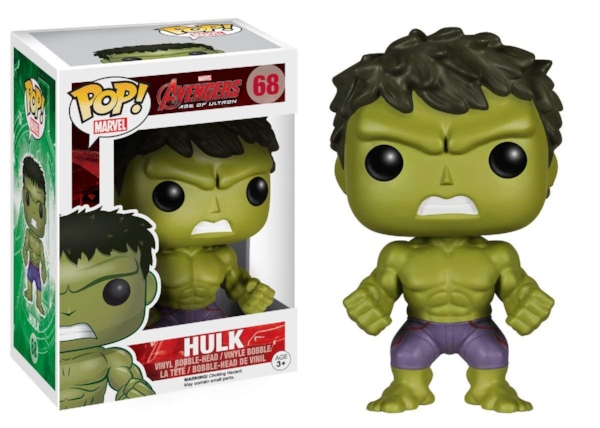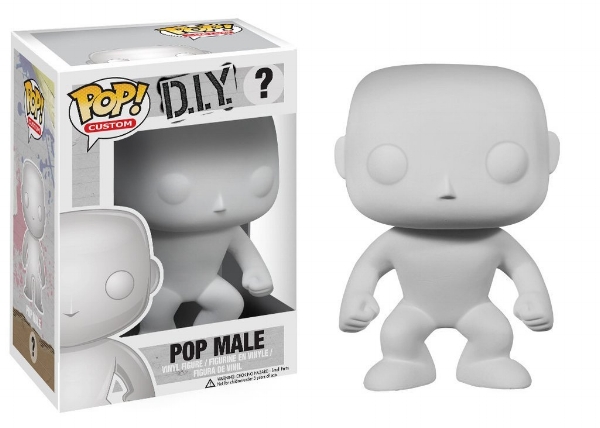Wonder Room Variants
/Do you know what Funko Pops are? They’re a line of 1000s of collectible cartoonish vinyl doll/figurine type things with big heads. They exist for almost anything someone might be a fan of.
Horror Movies
Comic Books
Star Wars
Cereal Mascots
Seriously, almost any sort of pop-culture genre you can think of is represented in some form in these Funko Pops.
Early last year, after I had written about the Wonder Room performance style, I was contacted by someone who wanted to hire me to create a series of effects that he could build into his display of Funko Pop figurines. This seemed like a fun(ko) idea, and he actually had the money to hire me to do it, and so I got to work designing a display and series of effects for him that combined his interest in magic with his collection of figurines.
The effects ranged from the simplest type of multiple out prediction effect to a much more complex transposition effect that was built into the display itself. In all there were 12 varied effects that he could perform. Including one with a custom Houdini Funko Pop.
My favorite was one where a “blank” Funko Pop…
would transform into a figurine of the spectator him/herself. Obviously this requires a lot of prep time and a bit of an expense(search Etsy for custom Funko Pops). But it was really strong magic (and could be played as slightly creepy, this doll is absorbing your essence) and it made an awesome giveaway.
The Wonder Room concept is the idea of building a repertoire of tricks into some sort of permanent display that people can look at and engage with. It could be something that is supposedly non-magic related, or it could be a collection of “strange objects” or something else that is intended to be overtly magical.
The ideal (in my imagination) would be an entire room with floor to ceiling shelves where people could peruse these odd objects, find one that appeals to them and then say, “What’s the story behind this?” But it doesn’t need to be so elaborate. It could just be a single shelf with some “odd” books you found (each book being special in some way to allow you to do some feat of magic or mind reading).
This summer, the guy who hired me to work on the Funko Pop set-up asked me to create a new display for his house. Now, I can’t tell you exactly what I worked on for him, but I can give you the basics and you could create something similar for yourself.
The display consisted of an 8 X 5 grid of small shelves. So 40 little shelves in total. On each shelf rested an object. Perhaps some sort of little toy or knick knack. (Does the phrase “knick-knack” translate for my international readers? A knick-knack is sort of like bric-à-brac. Hmm… that probably didn’t help. I know… a knick-knack is like a gewgaw. Eh… fuck it… that’s a word not destined to be translated, I guess.)
When people come in they see this display and it’s kind of inherently fascinating, all these little objects, but it’s not immediately known what this is supposed to be. They don’t really look like collectibles or any known type of trinket. What are these things exactly? So they ask, and then he tells them…
“Well, you know I’ve had an interest in magic since I was a boy. Most tricks, of course, are done with some type of sleight of hand or something like that. But over the last 45 years or so I’ve encountered some tricks that aren’t done that way. It doesn’t happen often, maybe once a year or so. These are tricks that fooled me and continue to fool me, because I’m not quite sure how they work. Yet somehow they do. My new hobby is to track down these tricks that fooled me throughout the years. And that’s what these are. Go ahead, pick one that looks interesting.”
So now there is a place to put all those gimmicky gizmo tricks that intelligent magicians have avoided as being “meaningless.” They are meaningless, individually, but together they’re not. In this context they they become a collection of little mysteries. Putting them on display makes them seem like something of importance, not something you hid away until someone happened to come over.
The guy who I created the instillation for wrote me once to say, “People who used to suffer through a single trick that I would bring out from another room, will stand in front of the shelves and practically demand to see trick after trick.” That’s the power of putting these sorts of tricks in context.
As I said, I can’t tell you the specific details of the display I was hired to create. But I can tell you about a similar one that I’m putting together with a friend now.
Eventually it will consist of 40 (or more?) of these display ledges by 3M.
On each little shelf will be a trick. What kind of trick? Well, ideally something that is examinable and self-contained. It doesn’t need to be 100% both of those things, but that’s the ideal.
(The display case I helped create this summer was rigged to hold out any additional props/gimmicks that might be needed. So, for example, on one shelf there might be a little rubber ball on a stand (part of a bounce/no-bounce ball set). In the process of reaching for that ball, the magician is able to load the no-bounce ball secretly into his hand.)
My friend is going to be using a number of Tenyo tricks and other similar effects in his version.
If you’re into magic, then half the fun will be doing the research, tracking down tricks, and coming up with your “display repertoire.”
You don’t need to go that route. It doesn’t necessarily have to be a display of tricks that (supposedly) fooled you. It could just be a display where the object on each shelf is something that leads into a trick. A small sealed envelope. A nest of boxes. A mini deck of cards. A red sponge ball. I’m not sure that has quite the same intrigue as a shelf of weird knick-knacks, but at the very least it presents another way to get into a performance where people can kind of peruse these shelves and be drawn to something and then you can take it from there. This is a nice position to put the spectator in. Often, with magic, the audience is just trying to catch up with a performance the whole time. The Wonder Room style allows them a choice, which—at least in a small way— allows them to lead the interaction for moment of time.








